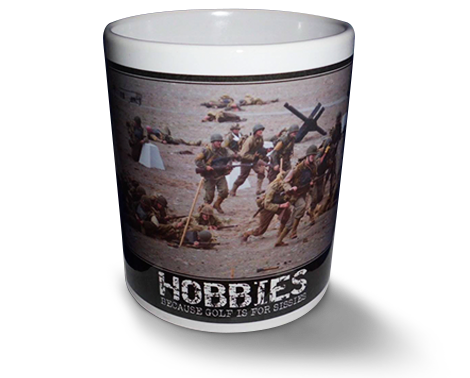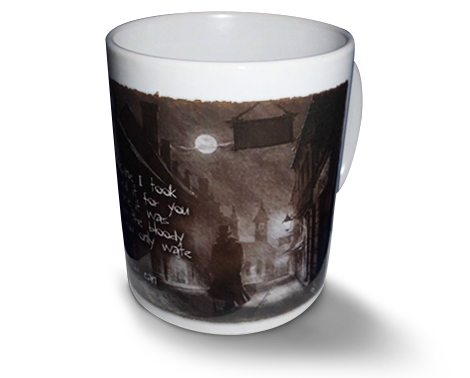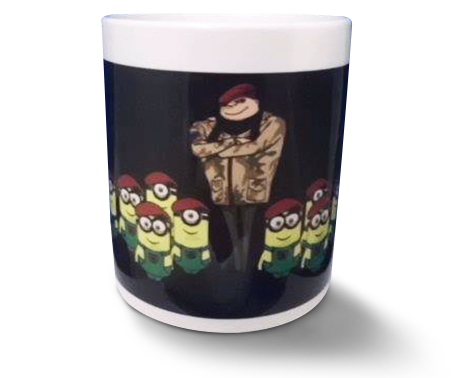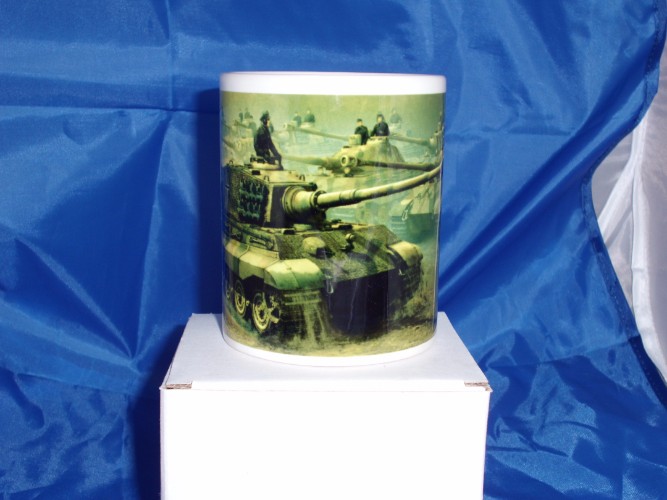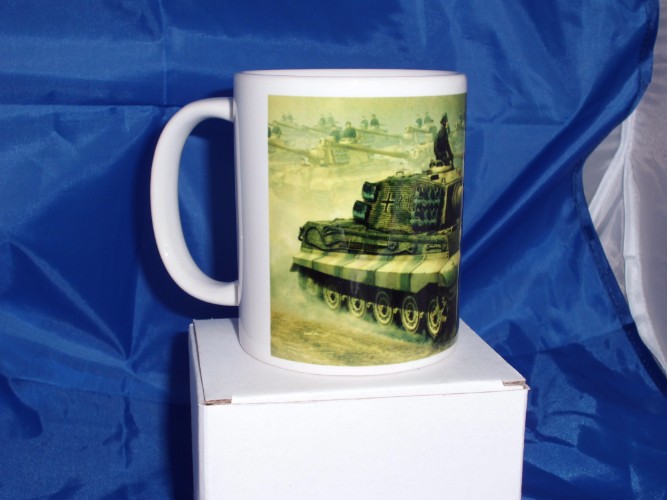King Tiger mug
11 oz dishwasher safe mug that will take prize in anybodies collection.
Germany's Tiger is arguably the most famous tank of World War II. With its thick armor and devastating 88-millimeter gun, the Mark VI—or Tiger I—soon earned a devastating reputation on the battlefield.
Designed as a breakthrough tank for breaching enemy defences, and allocated to a handful of special heavy tank battalions, the sixty-ton Tiger I seemed to have it all: firepower armour and for an early 1940's vehicle that weighed as much as today's M-1 Abrams, it was fairly agile. With its square, castle-like shape and long cannon, the Tiger I even looked deadly. But Hitler's generals and weapons designers were not satisfied. With Teutonic perfectionism, they complained that the Tiger I's KwK 36 gun was not the most powerful version of the 88-millimetre cannon (not that Allied tankers would have noticed the difference). Even before the Tiger I debuted on the battlefield (floundering in the swamps near Leningrad in an ill-advised attack in September 1942).
At seventy-five tons, it was bigger than its predecessor. Its longer-barreled (and thus higher velocity) KwK 43 88-millimeter cannon could penetrate five inches of armor at a range of two kilometers (1.2 miles). With Sherman and T-34 crews having about two inches of frontal armor between them and eternity, no wonder a supersized Tiger must have seemed the devil on treads.
The Tiger II also featured numerous improvements over the Tiger I. The original Tiger had vertical armor, rather than the more effective sloped armor(effectively increasing armor thickness) found on the T-34 and the later German Panther. The King Tiger had well-sloped armor that was six inches thick on the front hull. Its turret could traverse 360 degrees in nineteen seconds, compared to sixty seconds for the Tiger I, which had theoretically allowed a fast-moving Sherman or T-34 to maneuver behind a Tiger I faster than the German tank's gun could track it.
Like a professional football player, the Tiger II was more agile than it looked. It had a road speed of about twenty-five miles per hour, versus about thirty for the Sherman and T-34. Cross-country speed was about ten miles per hour, versus about twenty miles per hour for the other two tanks. Author Thomas Jentz, the dean of Tiger historians, writes that despite its size, the Tiger II had surprisingly good tactical mobility. Unlike the megalomaniacal 200-ton German Maus, which couldn't even roll over many European bridges, the King Tiger was a viable design.

